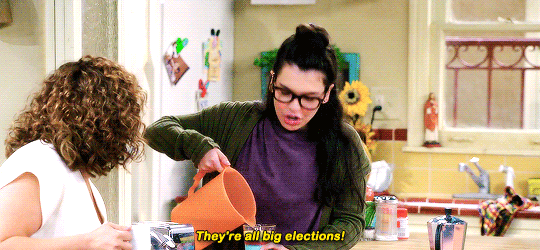meadow carr ⚹ 18 ⚹ she/her ⚹ hufflepuff ⚹ art education major ⚹ this is a multi-fandom blog ⚹
Don't wanna be here? Send us removal request.
Text
Blog #9
The past week has been spent on gathering a wider variety of resources for my paper, and compiling my working bibliography. I realized that I wanted to make the types of media I can talk about larger. Most of my articles were about TV and movies, which to be fair are the biggest areas of media, and the biggest proponents of diversity and representation. But I still felt like I need to show more sides of the story. I have now added an article about video games, an article about pop culture and music performances, and just more about diversity and representation in general. I think my paper will be a lot more rounded off with more topics to talk about. I can show how representation differs from genre to genre and how it affects different people differently.
I have almost completed my annotated bibliography. It is due tonight, but I’ve searching to see if I can find a few more interesting sources to use. I’ve just found the UCLA Diversity Report of 2019 tonight, which will help me immensely, so I think it’s okay. I’ll be working on my outline soon, trying to figure out what to exactly talk about and where to talk about it. I want to make sure I can show all the sides of the argument, which is harder than I thought it would be. But so far, I think I’m doing a decent job. I also need to edit my thesis and other details we did in class; I completed them in class and then didn’t really look at them again. I’m sure they can be improved, so I’ll be doing that in my outline.
0 notes
Text
Blog #8
So far, I’ve collected 5 resources for my paper, besides the ones I’ve done annotations on. I have been trying to collect sources to cover a range of representation, from shows to movies to more. I have a story from Huffington post, named “Why on Screen Representation Matters.” This is one of the base stories I want to use; that is, that it will lay the basis for my paper and help explain representation and help lead into the bigger ideas of the paper. I want to make sure the audience of my paper to be able to understand why representation is truly important. By laying down a strong basis, with this and other articles, I think it will be able to make my points better.
As I said previously, Steven Universe is going to be a large focus in my paper. I think that it is a really good representation of representation in media. It’s also unique because it’s a show made for children, and that plays a large part into the show itself and what they do. I’ve found an article I believe summarizes the importance of the show, from The Guardian. I will use this to show why Steven Universe is one of the biggest shows of representation today.
The last big resource I found was an article from The New York times, that went viral in the last year or two. It was and still is very controversial; it features the article writer interviewing white supremacists from Ohio. Audiences of the article were split and fighting: most saw the article as glorifying Nazis/supremacists and were against the article, while people who sided with the interviewees defended the article, saying it was important to tell their story. While a very unconventional form of representation, I find it a good example of what can happen with bad representation, and representation of real people and issues, not just stories in tv and television.
0 notes
Text
Blog #7
Today is a free-topic day for blogs, sharing something about our research topics we find interesting. I am choosing to talk about Steven Universe today. Steven Universe is a cartoon that is ending on Cartoon Network. The show stars a boy named Steven who’s mom is an alien from outer space, who gave up her body for him to exist. The race of aliens features gems attached to their bodies, and are all named after different gems. Steven’s mom was the leader of a rebellion on their home planet, and moved to Earth to protect it with her group of friends, who now raise Steven with his dad. The show is insanely complicated and in-depth for a kids show, but is amazing. It’s also celebrated for the huge amounts of diversity it shows, especially for a show on a major kids network. There’s countless references and representations of homosexual relationships, transgender issues, racial issues, and toxic masculinity. The show deals with these dark issues in a way that is lovely and shows kids that being different is normal.
One of the main characters, Garnet, is herself a representation of a gay relationship, and trans issues. She is revealed in the show to be a fusion of two other characters, or “gems”, Sapphire and Ruby. The two of them are both female-coded and use female pronouns. While the reveal of them being a fusion was a big deal, the show has pushed it even further in the following years. In the last season, Ruby proposed to Sapphire and the show had a whole episode showing their wedding. This was the first cartoon to show a lesbian (we assume) wedding on television, and it’s just one of the many things that Steven Universe as accomplished in it’s lifetime.
I began the brainstorming for my research paper with Steven Universe, initially wanting to only focus on the show. I later expanded the idea, but I still really want to feature Steven Universe. It’s existence has transformed the ideas of what can be shown in cartoons and in turn to children, and the impact it’s had is irreversible.
0 notes
Text
Blog #6
The main thing I want to learn about for my research topic, which is representation, is the multiple sides and views. There’s so many different ways to see representation, and be represented. I want to see new sides of the argument that I might not know much about, like people of color. I am not a person of color, so looking into different races and culture’s views about representation and how they are represented would share a whole new side of the story. I think that covering all of these different sides is important in my paper. I myself know about two minority sides of representation, by being a woman and LGBTQ+. I follow lots of people who fall into these minorities with me, and I constantly see new takes of representation from them. I am still learning about new things from people, even when I’m apart of the group that is being discussed/discussing.
I also want to learn about the opposing side of representation; the people who think media and culture are too “radicalized” now, and that young adults are ruining everything by being overtly sensitive. When you find a group of people that are similar to you, you don’t tend to branch out and find company in people who hate you and what you stand for. So, I don’t really know this side of the argument. I disagree with them, and ignore them mostly. Doing this is easier for me, but doesn’t open me up to the whole story. While I don’t see my opinions changing towards these people, it is necessary for me to learn more about their takes for my paper to be well-rounded.
0 notes
Text
Annotation #3
“What Exactly Is Media Representation Anyway?” is an article published by the AFMI, or the Arab Film and Media Institute. The article poses questions about representation, and answers them to show how important media representation is. They cover what the definition of representation is, the issues that are in current representation, like tokenism, and why representation is so important and needed. I liked this article because it gave necessary information in a clear and concise way, for the general public to be able to read and understand.
The article is written by Yasmina Tawil. Her biography at the end of the writing says she “completed her studies at Boston University, where she earned a B.S. in Film and Television with a minor in Visual Arts.” This shows she went to a high university and has a degree in this field, making her a reliable source. She is also being published on the Arab Film and Media Institute’s website, which in of itself is a reliable resource/organization. They describe themselves as “a non profit organization founded by the team behind the largest and oldest Arab Film Festival in North America.” The website also shows stills from movies across a long time range, up to 2017, showing that it’s still recent and relevant for our conversation.
I want to use this source in my research paper to clearly lay down the base for a conversation on representation in media and culture. This is a well-written article; it tells good information, in a formal but not academic way so anyone can understand it, and is from a reliable resource. I think this would be a good resource to use early on in my essay.
Resources
Arab Film and Media Institute, “About AMFI,” Arab Film and Media Institute, https://arabfilminstitute.org/about-afmi/. Accessed February 22, 2019
Tawil, Yasmina. “What Exactly Is Media Representation Anyway?” Arab Film and Media Institute (AFMI), AFMI, arabfilminstitute.org/what-exactly-is-media-representation-anyway/. Accessed February 22, 2019.
0 notes
Text
Blog #5
For our big research paper, I chose to write about the impact of representation in fandom and pop culture. I wanted to find a topic that I already knew a decent amount about, but would be able to learn more about. I’ve taught myself in the past about the importance of representation to minority groups, but I wanted to learn more. It’s a very important part of media and culture; every group deserves to be represented in productive and positive, non-stereotypical ways. The effects representation can have on people are tremendous. The main focus is usually for young kids. If kids can see themselves or someone like them on screen, no matter their race or religion, they feel confident and seen in the world. When we always have the same white, straight characters as the good guys, and anyone else as the enemy or antagonist, it hurts more than it helps. Representation can introduce kids to new things as well. Kids can see new religions, holidays, jobs, traditions, people, or anything else that they’re not used to and learn new things. It can pique their interests in new topics or activities, or help them be able to relate to kids that might be different from them. Having a broad range of representation, beyond just kids and into any age, can help everyone learn new things and experience new view points and opinions. I wanted to find the biggest examples of this, and show how it helped people, and why it’s important. One example I’m looking into using is Steven Universe; this show was the first to show a same-sex couple on Cartoon Network. There was a lot of feelings about this move, and the episode it shows the couple got censored in some countries even. Events like these are still happening now, and I want to show why it’s wrong, and why representation like this is needed.
0 notes
Photo

Ariadne & Dionysus
twitter / instagram
www.janaina.net
26K notes
·
View notes
Photo

My piece for the @yoifantasyzine ~ Totally inspired by Ghibli’s wonderful style! I wish I could have done it a little more justice in retrospect but a fun project nonetheless. Big thank you to the entire zine crew <3
I’m on Instagram too: https://www.instagram.com/mikkapi/?hl=en
18K notes
·
View notes
Photo
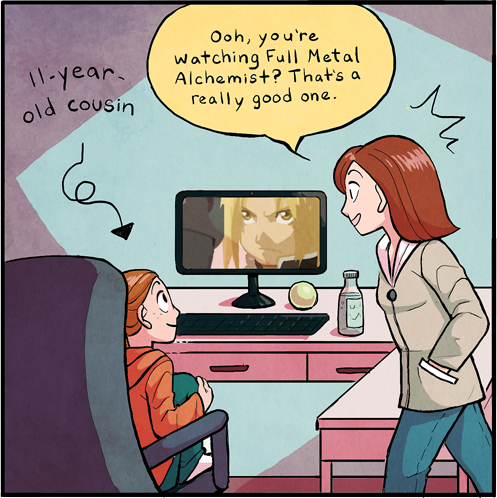
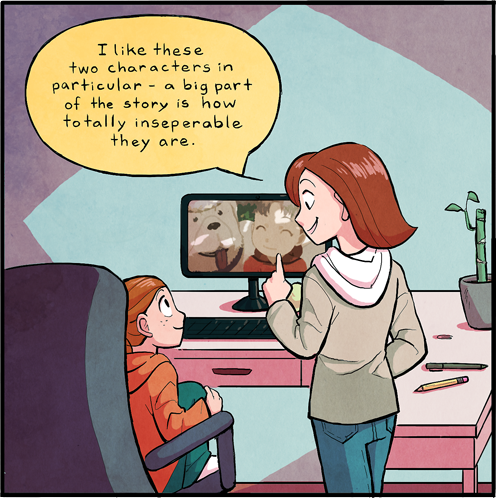

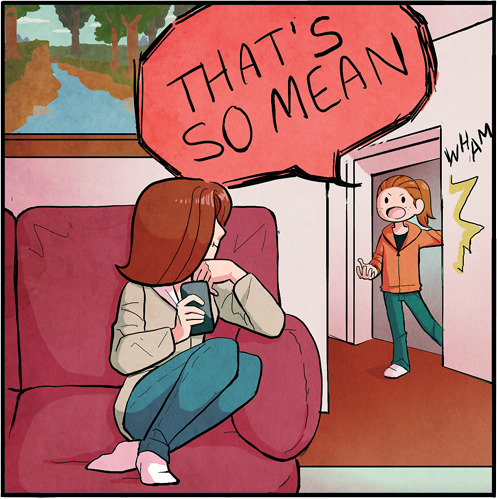
She was on that episode and a very stupid opportunity presented itself
196K notes
·
View notes
Text
Blog #4
As a fan, the research I do mainly starts on social media. The ones I use most often are Twitter, Facebook, and Instagram. Normally, I find a story on one of those that I want to learn more about. I’d start with searching it on that site, to see if other people or pages are talking about it. For example, today on Twitter I read that Lin-Manuel Miranda was going to guest star on Brooklyn 99; understandably, I was really excited. Some of the replies said that he would be playing Amy’s brother, while the original post didn’t mention that, just that he would be guest starring in an episode next month. So I went onto the search and found other news reports, and other fan pages, stating the role he was playing. This way I found out that he really was playing her brother, and got to be actually excited and share the news with my friends and fiance that also watch the show!
If I can’t find anything on the website where I hear news from, I always google it and try to find out if it’s legit. I don’t like sharing things and then finding out that it wasn’t correct, or it’s misleading. Besides this, I don’t do research within fandoms really unless it’s a random question that can be answered with a quick Google search. Mostly this is to find a past role of an actor, or to figure out where my fiance and I know a voice actor from, so IMDb is what we mostly use.
0 notes
Photo
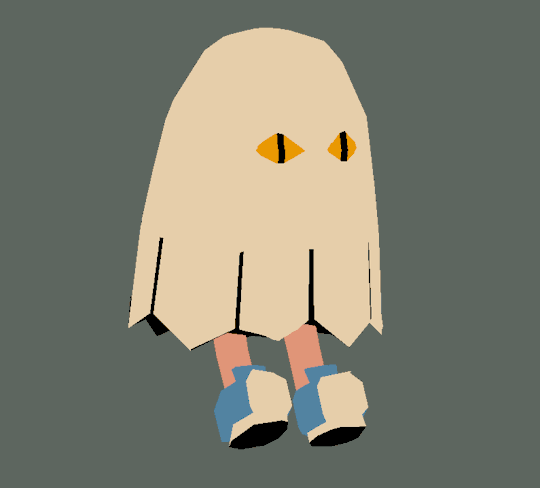
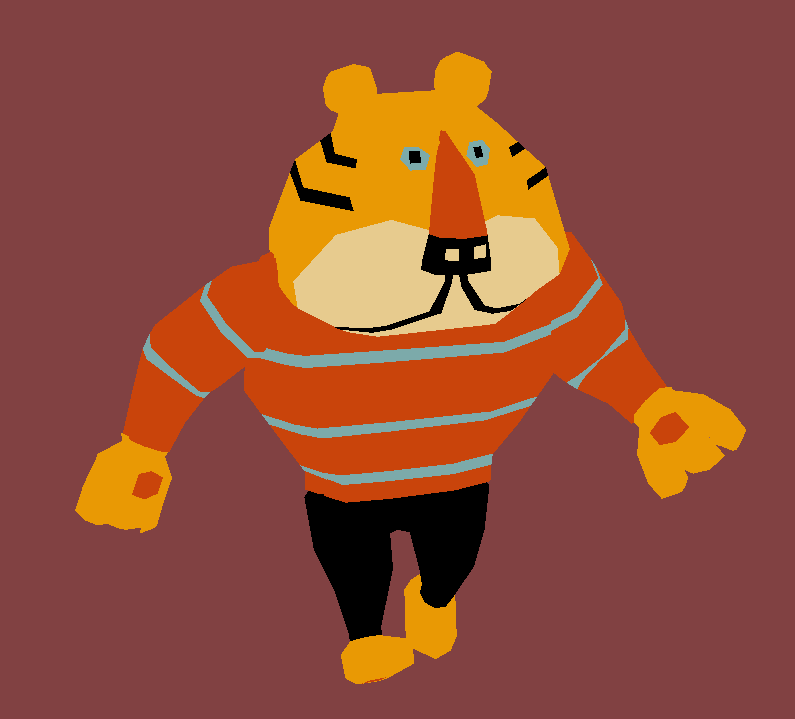
I thought myself to use blender this weekend, I had been meaning too for a while now! it’s real fun! you can also check out 3d versions of these on my sketchfab
8K notes
·
View notes
Text
Annotation #2
“The Hawkeye Initiative: Pinning Down Transformative Feminisms in Comic-Book Culture through Superhero Crossplay Fan Art,” is an article about a fan art site that changes sexist drawings of comic books, to show the issues in how women are shown in comics. Starting in 2012, the website has one job: to take covers and panels from comic books of women drawn overtly sexual and in positions that a normal body could not reach, and redraw them using another superhero, Hawkeye. They keep the pose and sometimes the costume, but occasionally use the original, over-sexualized costume that Hawkeye himself used to wear, hence why he is the subject of these re-creations. They call out the sexism and degrading of women done in these comic books in a humorous way, while showing the extreme differences that the men and women of comics are dealt.
The source is reliable due to the fact that is is published by the University of Texas Press. This is a group that publishes over 90 books a year and 11 journals in a wide range of fields, publishing the research of scholars and students. The press is 100% affiliated with the University of Texas, and is a professional, scholarly journal. They have also been around since 1950, showing that they are reliable and have lasted a long time. The author, Suzanne Scott, has also been published before, covering topics related to this in “Fangirls in Refrigerators: The Politics of (In)visibility in Comic Book Culture, Transformative Works and Cultures.” She is knowledgeable in this department of study.
This website is a good cross between fandoms, art, and feminism, which are all things I want to focus on for my paper. I’ve known about this website for a long time, so finding an article over something I already knew about makes it easier for me to figure out how to use it. I think this article is a good example of how fan art isn’t just art, but can also be used for other things, such as activism, seen here. By making these low-key and funny drawings, the website is taking these issues and thrusting them into a new light, and giving a new perspective to people who may not see the issues at hand.
.
.
.
Sources
Coppa, Francesca, “Women, Star Trek, and the Early Development of Fannish Vidding, Transformative Works and Cultures,” no. 1 (2008): http://dx. doi:10.3983/twc.2008.0044
Scott, Suzanne, “Fangirls in Refrigerators: The Politics of (In)visibility in Comic Book Culture, Transformative Works and Cultures,” no. 13 (2013), http://dx.doi.org.proxy.bsu.edu/10.3983/twc.2013.0460.
Scott, Suzanne. “The Hawkeye Initiative: Pinning Down Transformative Feminisms in Comic-Book Culture through Superhero Crossplay Fan Art.” Cinema Journal, vol. 55, no. 1, 2015, pp. 150–160., www.jstor.org/stable/43653492.
Stevenson, Noelle, “How Are You I'm Fine Thanks,” 2012, http://gingerhaze.tumblr.com/post /37003301441/how-to-fix-every-strong-female-character-pose-in.
0 notes
Text
Blog #3
My involvement in my fandoms varies depending on the fandom in question. Take for example the Harry Potter fandom. I own multiple shirts for it, my favorite being my Hufflepuff sweater. I own all of the books and movies, and constantly tell people to read and watch them. I follow lots of pages on Instagram and Twitter, sharing mostly fan art that I find interesting. This is probably one of my more involved fandoms. There’s some fandoms where I occasionally check in and like some stuff for, like the anime FullMetal Alchemist (Brotherhood) or One Direction. A long time ago, I had a whole twitter dedicated to One Direction, and made lots of friends on there. I had so many posters, and the first 3 albums of theirs (the only good ones, imo). That’s definitely the most involved I’ve ever been in a fandom; now, I am older and have a lot less time for that kind of fandom dedication online. I mean, I used to read 30k word fanfictions each night, and share them with friends and talk about them like books. The biggest way I involve myself in fandoms now is by following artists and liking and sharing fanart. I love fanart, and the dedication people have to making the best art possible to show their love for their fandom. I have multiple folders of saved art on Instagram, and my twitter is full of retweets of my favorite fandoms.
0 notes

